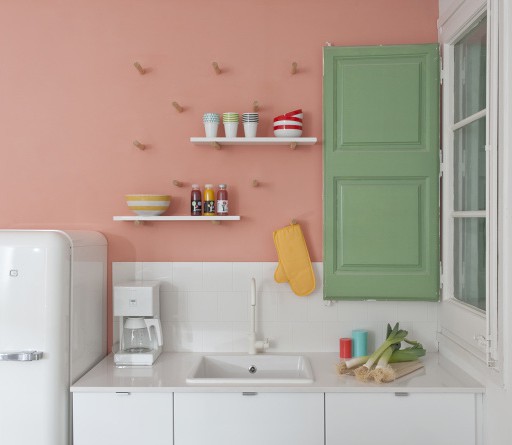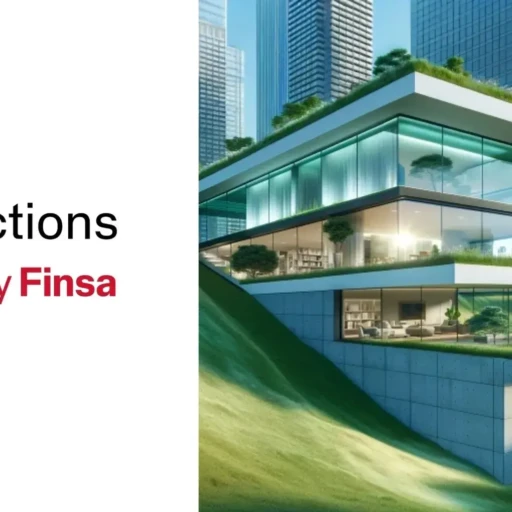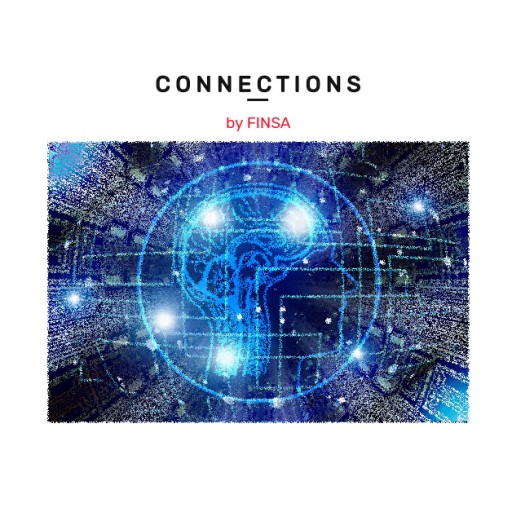Economising the use of resources, sustainable materials, personalised furniture. These are just some of the interior design trends that design studios have pointed to for 2020. We spoke with Stone Design, Clap Studio, and Tinkah about what awaits us this year. Keep an eye out because we’ll be giving you more clues about trends on Friday.
Stone Design: towards economic use of resources
Eva Prego and Cutu Mazuleos from Stone Designs don’t really follow trends in architecture and interior design. In fact, when it comes to long-term projects, they believe that talking about annual trends makes no sense. But there is one general trend that they are noticing among their clients and that they are also committed to: “Creating projects that economize a lot and balance three variables: aesthetics, functionality, and resources”. They see this as a reaction to the recent era of certain “excesses” and as something that is closely related to sustainability: “The reality is that we cannot allow ourselves to continue consuming from the planet at this pace. It’s all a question of economising resources on the largest possible scale when managing projects and products”.
This has a big effect on the aesthetics of a project. One example is in the choice of materials: their traceability, their durability, their lifecycle etc. In the case of wood or textiles, its necessary to know where the raw material comes from. With manufactured materials, it is important to know about things like the manufacturing process and the checks that it is subjected to. Stone Designs explains that “all of this comes at a price, but by accepting this, we obtain better quality and longer lasting materials”.
https://www.instagram.com/p/Bu1whQshSoJ/?utm_source=ig_web_copy_link
Whereas previously trends in interior design moved at a much slower pace and local styles were more noticeable, globalisation means that nowadays we can see the same style of project in, for example, Stockholm and the Dominican Republic. Cutu sees this as a handicap arising from easy access to information, as projects greatly influence each other and thus lose their sense of identity.
When it comes to colour, they believe that is has finally been understood that colour is a language with different typologies and that, depending on how it is used, it can transmit different sensations. Previously, the use of colour was much more restricted, but now it is used as a tool. “We are often hired for our use of colour,” they recognise, “but the colours that we use depend on where we are personally as well as the type of project”.
Economisation is much more present in their other line of work – product design – because “you have to put a lot of qualities into something very small, and its commercialisation is heavily dependent on its price”. Interior design allows them to “fly”, but in order to get a high-quality product, the correct balance between the three elements of functionality, aesthetics, and resources must be achieved.
https://www.instagram.com/p/Bt0VIuphEbC/?utm_source=ig_web_copy_link
In the furniture world, Cutu has noticed “a growing interest in personalisation in order to differentiate your projects from those of others”. Even big brands are starting to offer this service, allowing customers to customise certain elements in their standard collections. “Clients are becoming more demanding, and brands understand that transmission of their values occurs when the whole experience of the user lives and breathes those values, even in the smallest details. Interior design and product design have both been influenced by this philosophy.”
Among Stone Design’s references, Japanese studio Wonderwall stands out in this respect, as they are always one step ahead.
Clap Studio: creating experiences and memories
For Ángela Montagud and Jordi Iranzo of Clap Studio, it’s clear that we are living in a digital age in which technology is at the centre of our daily lives. “Some of the most inspiring spaces at the moment are physically impossible ones that have been created digitally”, such as the dreamlike atmospheres created by Alexis Christodoulou, Andrés Reisinger, and Six’n’five. For this reason, Montagud and Iranzo believe that in 2020 we will see more projects that try to transport the user to a new universe that has been created by the designer themselves. This is what Clap Studio is chasing in all their retail projects: “Our goal is to create a unique experience that endures in the mind of the user. It’s not enough to design a space that is nice on a visual and functional level. We have to create memories that people take home with them”.
https://www.instagram.com/p/B6OBJwLje9b/?utm_source=ig_web_copy_link
Style is heading towards a new minimalism, which will be different to the pure and understated version that we are familiar with. And if a revival from the past resurges in this cyclical world, it will always be in a new way so that it can adapt to the needs and concerns of the present.
At Clap Studio, they like to investigate and find new materials to work with, and they believe that we are living in a time in which many are emerging. “Thanks to a growing concern for the environment, many companies are creating very interesting materials using recycled products”, such as the Dutch company Plasticiet, which makes blocks from recycled plastics, and the English company Altrock, which designs customisable terrazzos using waste marble from industry. “We think that in 2020, we will see more recycled materials and more materials that are less harmful to the environment as a result of this social concern, and we will start to see them being used in more interior design projects in a natural way.”
https://www.instagram.com/p/B7X6m29osrA/?utm_source=ig_web_copy_link
Furniture trends are influenced by each project. At Clap Studio, they like to use personalised furniture together with pieces from big brands and independent designers: “In office projects, it’s impossible not to use big brands as their chairs are safe and of a quality that is difficult to find without that kind of professionalism. In hospitality and retail projects, we love to play with the three possibilities: made-to-order furniture, pieces from independent designers, and furniture from big brands.”
In interior design, functionality must not be ignored, but for Montagud and Iranzo there are projects and spaces in which they can be more playful and let the aesthetics take over. This is the case when it comes to colour, which will continue to be important in 2020, but which will be used in a more measured and playful way, a move away from the Memphis style.
They see fashion as a creator of trends. “We follow the work of the creative directors behind the big and medium-sized brands, but what we love to look at and study are the stages created for the fashion shows every six months. We are fascinated by the work of Bureau Betak and Villa Eugénie, who specialise in creating experiences and, above all, memories.”
https://www.instagram.com/p/B5VC-EiKVZm/?utm_source=ig_web_copy_link
Tinkah: buscando el lujo en los materiales sostenibles
Carlos Gris, creative director of Tinkah, agrees that it is impossible to define just one direction for such a big industry. The two key problems that designers are facing with the increase in people living in urban areas and the need to look after the planet are: How can we make better use of smaller spaces? and What materials can we use that will be better for the environment? For the first question, Gris points to the move towards creating more flexible and multipurpose spaces that make better use of smaller dimensions. When it comes to reducing the impact of the less-than-attractive term “recycled”, he advises us to look for materials of this type that contain an unexpected sense of luxury.
In terms of style, many types are emerging, but Gris believes that millennials are looking for authenticity. That’s why “the most successful spaces will be those that are stripped of unnecessary façades and that have a more functional focus”, something he calls the “Richard Rogers effect”.
He predicts that the resurgence of retro materials will continue, and that with the growth of 3D printing and the push for sustainability, new doors will open for biocomposite materials. Tinkah is currently exploring the use of brine, a harmful by-product of the water purification process that occurs in desalinisation plants, as a construction material. They are also experimenting with different adhesives made from the waste products from steel refineries. Carlos Gris knows that “the more designers that experiment with waste or by-products, the better chance we have at prolonging our existence”.
https://www.instagram.com/p/B3R42bbnN2V/?igshid=1b1jlzmb3jdfe
This “functionalist” and honest focus in design that he is talking about will have a domino effect on colours. “With an increase in the use of natural materials, we will see more muted and less saturated colours. If coral was chosen as the Colour of the Year by Pantone in 2019 in order to draw our attention to the ocean, this year they have reinforced the same idea with Classic Blue, the Colour of the Year for 2020.”
Industrial design is enjoying a new life thanks to the injections of creativity from different types of design found in multi-disciplinary studios. But the biggest trend that Gris points out is the inclusion of personalised and unique options in the product ranges of big furniture manufacturers in order to adapt to the demands of millennials. “It will be interesting to see how a brand like IKEA is going to offer personalisation. With design technology becoming increasingly easy, with any luck we will be able to able to print our own 3D chair design while we eat some meatballs [from the IKEA cafeteria].” In the words of Massimo Vignelli, “if you can’t find it, design it”.
When it comes to the pairing of functionality and aesthetics, Gris believes that the former should inform the latter. “You must start designing something that is functionally solid. You can improve the aesthetics at a later stage.” However, in certain projects, particularly later in your career, it’s important to keep an open mind and allow yourself to have a wider focus, “because at the end of the day it’s design and there is no right or wrong answer, which is frustrating and magnificent at the same time”.
Trends are temporary, which is why Carlos Gris says that he prefers designers that ignore them and maintain a degree of consistency in their portfolio. “I look for a result that matures over time and doesn’t go out of style”, like the work of David Chipperfield. Whether it’s in his retail fitouts for Valentino or in the James-Simon-Galerie in Berlin, he is always sensitive to the context and pushing for creativity in its purest form.
https://www.instagram.com/p/B5Px1nAnXt2/?igshid=3vbo47zpu2v6




